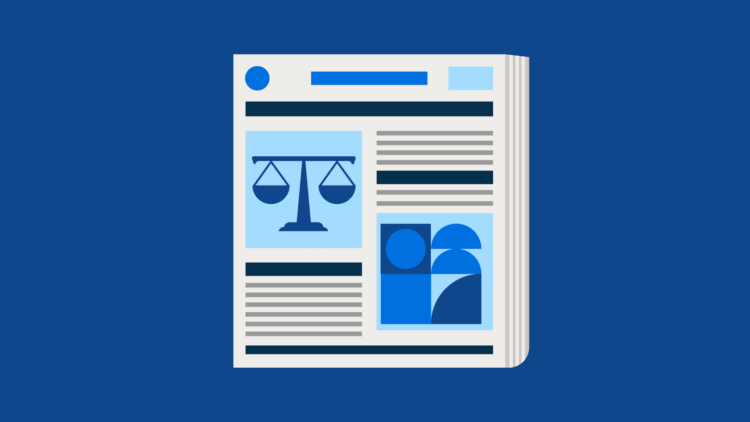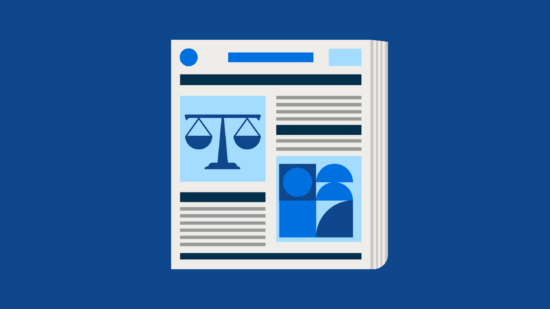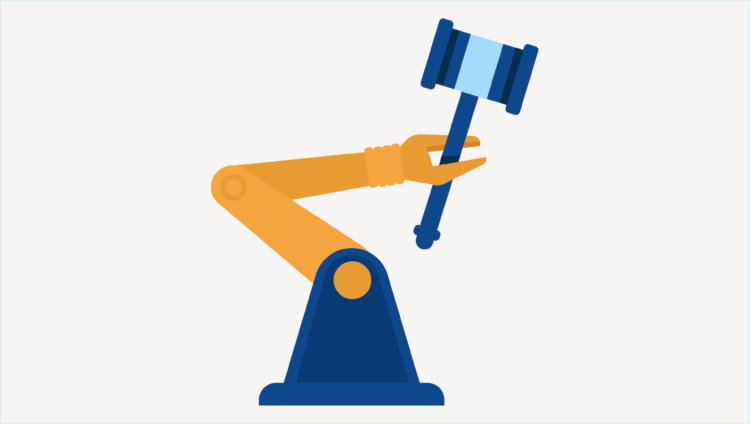We’ve talked a lot about the benefits of AI—but we also understand the risks. Unfortunately, instances of lawyers being sanctioned for relying on AI-generated briefs have taught the profession that AI does not come without complications and is not a substitute for a lawyer’s wisdom.
We’ve also seen the courts respond to the rise of AI in the legal profession—notably, when a Texas judge issued a Mandatory Certification Regarding Generative Artificial Intelligence directive requiring all lawyers who appear before him to certify that any portion of a filing generated by artificial intelligence has been checked for accuracy by a human being.
None of this is to say that AI has no role in creating legal briefs. In fact, when used responsibly, AI can help streamline the drafting process significantly. Below, we’ll dive into the related stories discussed above and share our thoughts on using AI for briefs (responsibly!).
Lawyers use ChatGPT to create a brief—but AI gets it wrong
In June 2023, a New York federal judge sanctioned two lawyers who used ChatGPT to write a legal brief.
Why? Because ChatGPT got it wrong.
Specifically, the lawyers submitted a brief citing cases that didn’t exist (presumably without checking to confirm the cases existed). This is a great example of the risk of AI “hallucinations”—instances where the program generates nonsensical or inaccurate information.
When opposing counsel questioned the origins of the cited cases, the presiding judge directed the lawyers to produce copies of the cases. It became apparent that the cases in question were not real.
Subsequently, the two lawyers who prepared the AI brief were sanctioned with a $5,000 fine after the judge determined that they had acted in bad faith and made misleading statements to the court.
Unfortunately, this wasn’t the last instance of AI hallucinations making their way into legal briefs. In February of 2024, a Canadian lawyer was reprimanded for providing a brief citing non-existent cases generated by AI in a family law matter.
No AI briefs without human review in (some) Texas courtrooms
Across the country, and on the heels of the sanctions, another piece of AI brief news has created a buzz: U.S. District Judge Brantley Starr issued a direction requiring counsel to certify whether they used AI to create any filings and, if so, to confirm a human reviewed those filings for accuracy.
Judge Starr’s AI court certification directive appears to have inspired several standing orders requiring similar certifications in Texas (as of publication, a search for “artificial intelligence” on the Texas Courts’ Local Rules, Forms, and Standing Orders page brought up five standing orders).
You may like these posts
AI court certifications and lawyers’ duties
It’s clear that AI has tremendous potential to shape the legal industry—but in adopting new technologies, it’s also essential for lawyers not to lose sight of their duties to clients, opposing counsel, and the courts.
Judge Starr’s directive touches on an essential responsibility that lawyers have to act honestly, and in good faith, in their dealings with the court. That responsibility goes far beyond what counsel says in court and extends to the accuracy of filings, submissions, and briefs.
And, with other judges following suit in Texas, we will likely see many more such directives appear across the country as AI becomes more widely accepted in the legal industry.
Be sure to read our piece on AI in the Courtroom.

Using AI to write briefs—responsibly
All of that being said, should lawyers use AI to write briefs? Provided they do so responsibly, yes.
AI has the potential to drastically change the way lawyers do work, and harnessing AI to help generate ideas and draft briefs is just one of the ways that AI can help make lawyers’ jobs easier.
However, it’s important to remember that AI isn’t perfect. As we’ve seen above, it can get things wrong. If you’re using AI to write briefs, consider any work product arising from your AI prompts a very rough first draft.
Our tips for writing briefs with AI
Some tips for reviewing AI briefs for accuracy include the following:
Understand the potential pitfalls of AI use—and avoid them
Note that AI comes with a number of challenges for law firms that you’ll want to consider before even using it—including considerations relating to data privacy and confidentiality, bias, and other ethical considerations.
Don’t rely on AI for legal expertise
Consider any arguments or points offered by AI carefully, and do not take them at face value. Remember, you have an obligation to your clients and the courts and must ensure that your arguments are sound in law and logic and that you aren’t missing out on any arguments that could help your client’s case.
Double-check AI outputs
Thoroughly vet any cases cited by AI. Confirm that the cases cited actually exist by locating the primary source, ensure that the points made in relation to the case are accurate by reviewing the primary source, and conduct your own research to ensure that AI has provided you with the leading (or most convincing) authorities and that you aren’t missing other cases that could also help.
Know your court’s stance on AI briefs
Additionally, regardless of whether you intend to use AI to write briefs or help with your legal work, be sure to familiarize yourself with your court’s stance on AI—for example, whether you will need to include a certification regarding your use of AI with your filing.
Conclusions on using AI to write briefs
At the end of the day, the best way to use AI—and to minimize risk while using it—is to understand what AI can do and recognize its limitations. AI doesn’t fully understand the nuances of legal arguments. (In some cases, it doesn’t even have access to the most recent laws and cases!) It can, however, help you develop a draft and provide limited case research support.
And, there are other options for making the brief writing process more efficient. For example, you can use legal brief templates or document automation tools like Clio Draft to save valuable time while still creating polished briefs!
If you practice personal injury, be sure to check out our suite of features tailored specifically for personal injury. You can not only manage medical records, track and summarize damages, and provide settlement estimates, but also pull information from custom fields into your own templates to automatically create personal injury case documents like complaints, discovery requests and responses, and requests for medical records.
To learn more about what AI does and how to use it in your firm—while remaining mindful of ethical and professional risks—read our comprehensive guide to AI.
We published this blog post in July 2023. Last updated: .
Categorized in: Technology
Clio Duo is Coming Soon
Meet Clio Duo, the AI-powered partner you've been waiting for. Be among the first to see it in action.
Notify me when Clio Duo is ready






